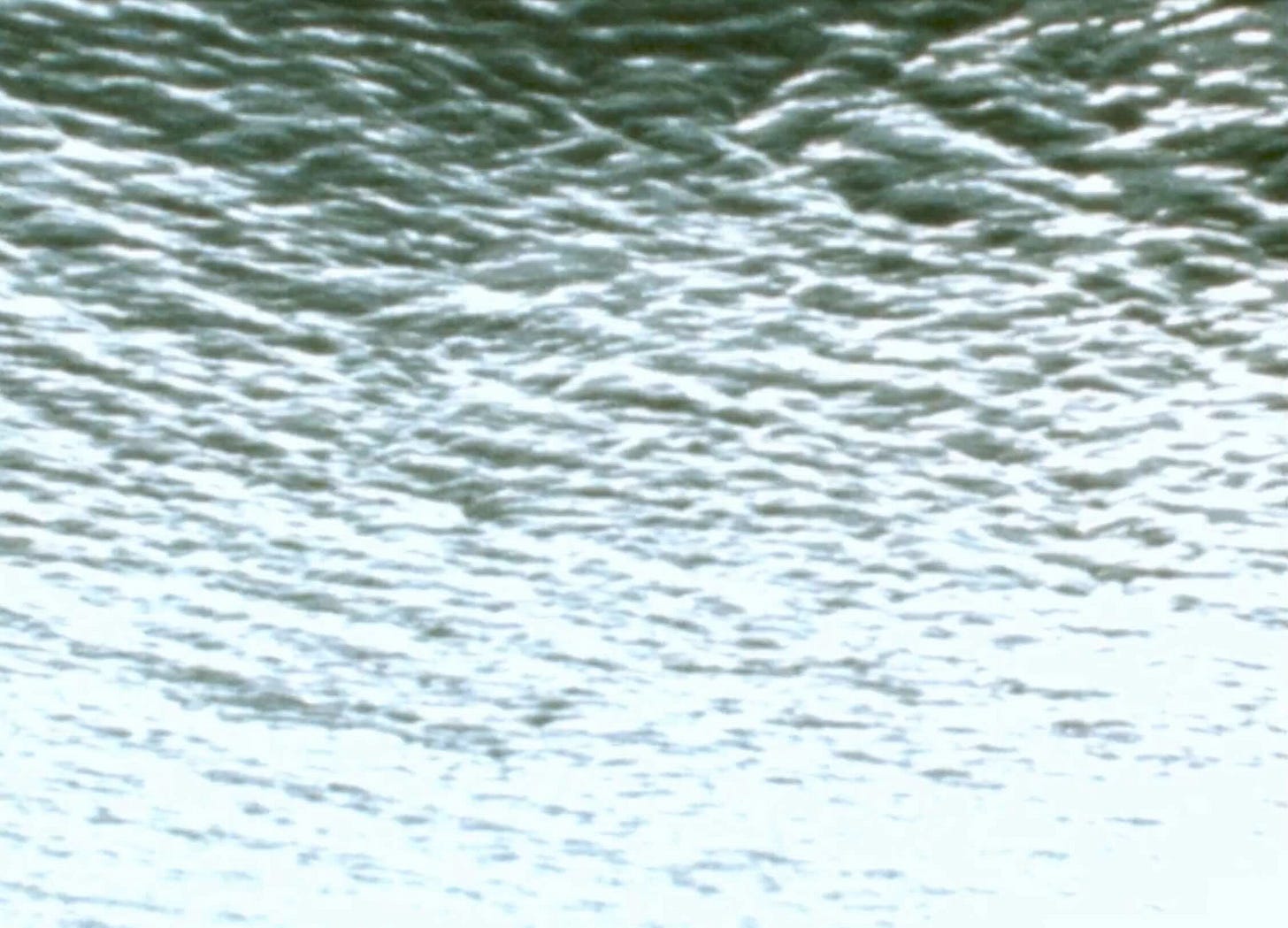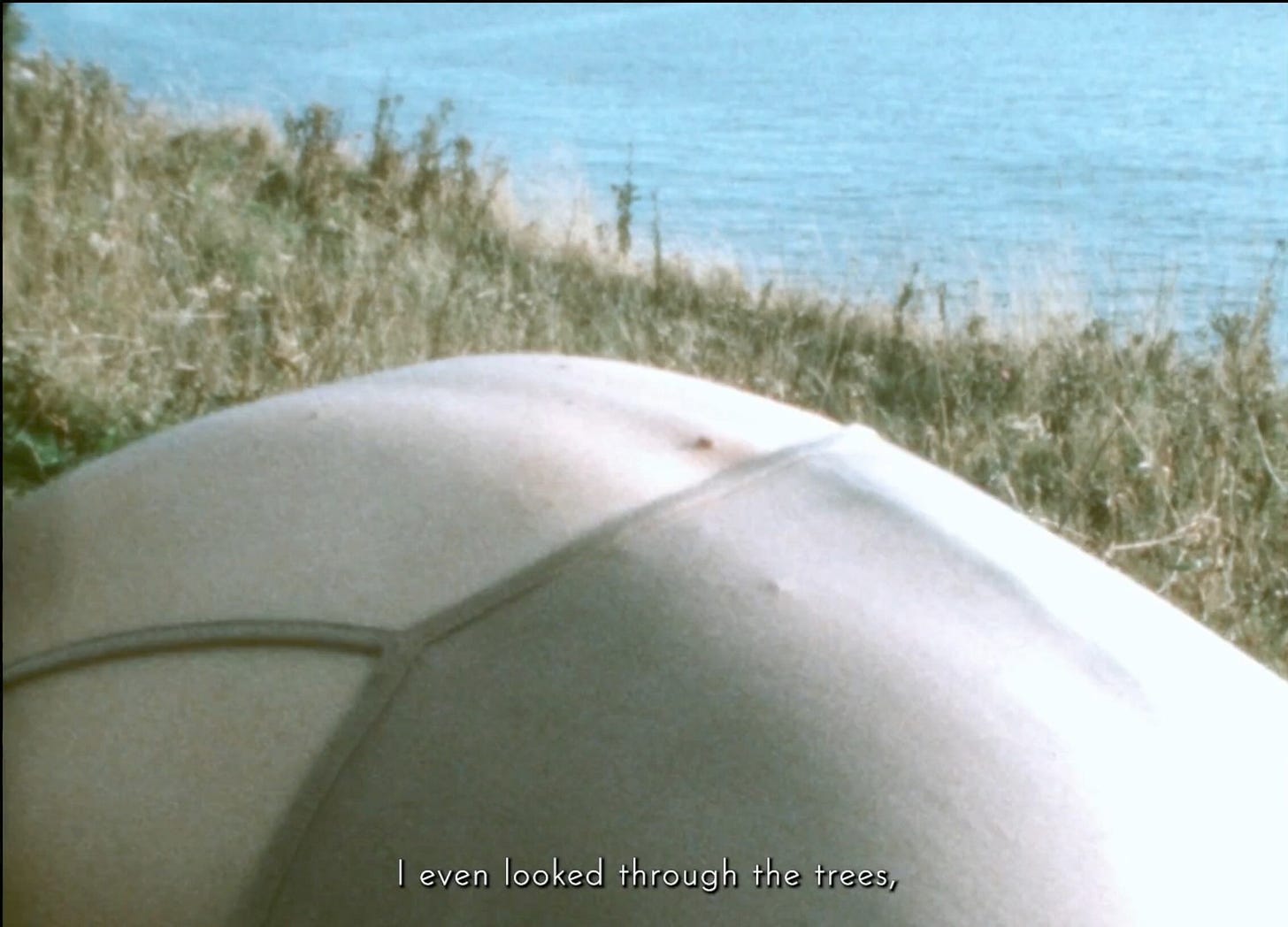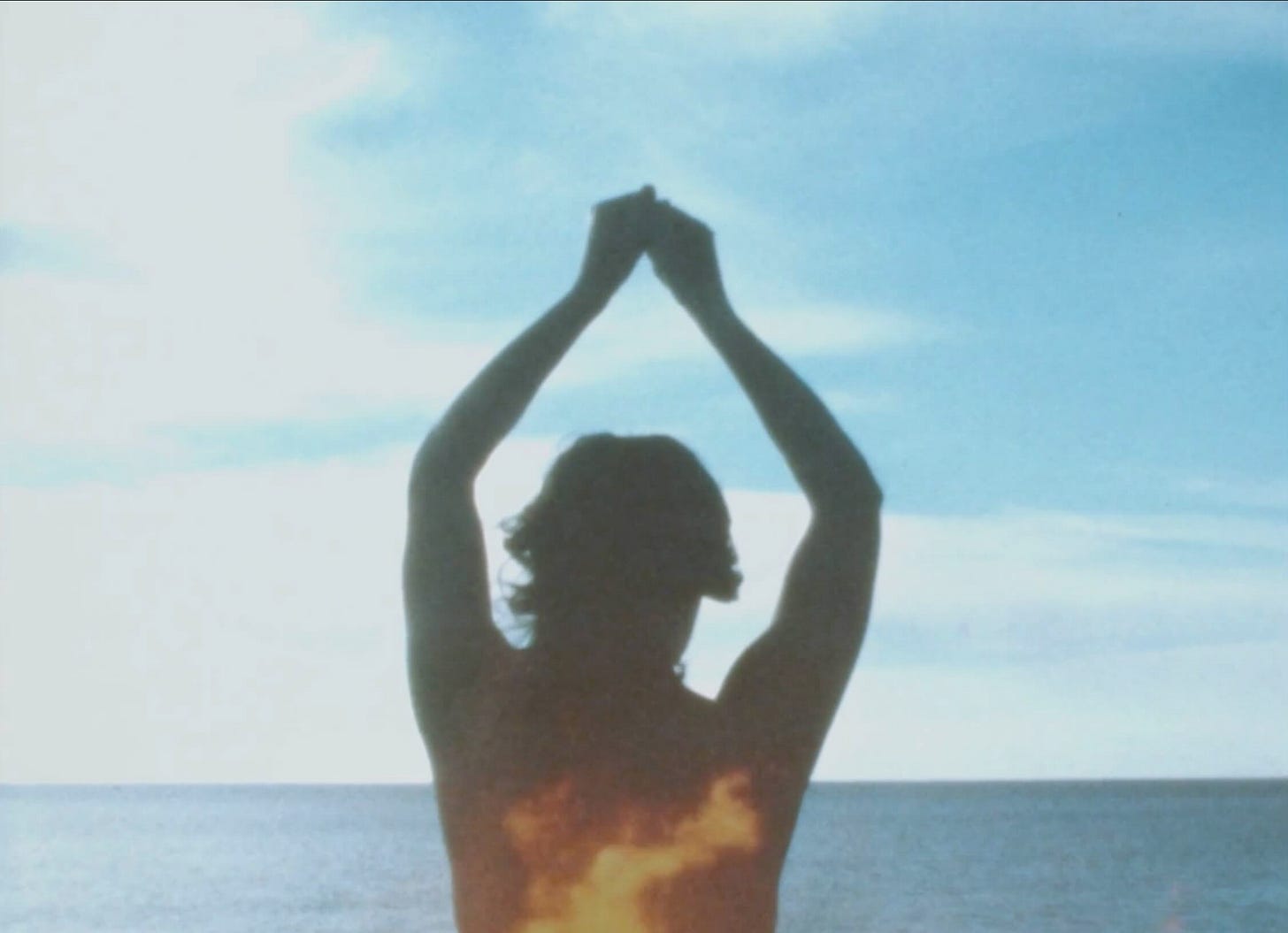Recombinant Choreography: Immortals
(2023)
Over the coming weeks, I will be writing about some films which I enjoyed at the Moviate Underground Film Festival in May 2025.
Immortals is a 6 minute dance film, a collaboration between Canadian artists Elizabeth Crispo, Mark Durand and Bettina Szabo. Szabo, a choreographer and dancer, is featured in the film, filmed on and around a rocky seacoast. The film opens with a beautiful shot of the ocean, and then, disconcertingly, we immediately see it upside-down, the waves dangling downwards.
On the soundtrack we hear Szabo reading her own text, a poetic description of always having the feeling that she was “in the wrong place” and therefore needing to “search.” Perhaps this refers to her experience as an immigrant, and the early impulse which made her want to go abroad. (Szabo was born in Uruguay, and has lived in Montreal since 2007.)
The first time we see her, a sharp contraction heaves her spine into view. Whatever kind of search she is conducting, it comes from her gut, from her center. The film is a version of a common theme: the lone figure, drawn to the beach, finding it a suitable place to examine central questions about one’s life. (Another recent example can be found in Martin Gerigk’s Prayer of the Sea.)
Just as Szabo decides that what she is looking for is “close, so close, at the very essence of my skin,” the film shifts from its relaxed rhythm to quick cuts and extreme close-ups of parts of her nude body: an eye, the space between her knees. Rapidly propelled into physical proximity, we experience her dancer’s sense that wisdom, insight, comes from the body.
The sophisticated editing creates it’s own kind of musical epiphany, with rapid successions of fragmentary gestures: a piece of diaphanous fabric slipping over Szabo’s body, her hair whipping in a circle, her body bouncing off of the rocks. The music, a sparse aural landscape with sudden explosions of percussion and single notes, mirrors the jagged and unexpected rhythms of the editing. It’s as if a series of mini-explosions are occurring. Brief shots which are dominated by red, flame-like color are mixed with the calm blue and gray of the rocks and the sea. Surprisingly, shockingly, the film dislocates time and space, creating choreographic and musical phrases out of editing, in the manner of Maya Deren’s A Study in Choreography for Camera. These dislocations suggest that multiple, discrete moments of consciousness are being fused and re-arranged into a new awareness, like a sudden epiphany, in which myriad impressions become infused with new meaning.
The film intermingles the seascape with images of fire, smoke, and sand, in a ritualistic combining of the elements of earth, air, water and fire. The filmmakers manipulate time as well as space, interspersing moments of slow motion, as well as striking moments of reverse motion, such as smoke being drawn back into a fire. Szabo baptizes herself with sand while fire is superimposed over her torso. Her search, which began with outward movement, reverses course, and she finds an inner strength by withdrawing into her center. A mirror, reflecting at times the sun, the flames, or Szabo herself, refers to the journey back inside the self.
Immortals is a short but powerful example of the extra dimension that cinema brings to dance: by rearranging time and space in unexpected ways, the filmmaker makes movement interact with the environment in ways which would be impossible to do in a theater. The camera here does much more than take the viewer to a remote location to watch a dance. It expresses Szabo’s immediate, physical reaction to the site, the waves, the rocks, the sand. It re-links disparate moments, in the same way that consciousness constructs meaning out of disparate memories. This isolated, awe-inspiring landscape opens up an opportunity for Szabo, and for us, to build meaning from our experiences. This may not make her (or us) immortal, but it surely connects us with a sense of the eternal.
My articles on experimental film are freely available to all, but are supported by monthly and annual donations from readers. Please consider becoming a paid subscriber to support my work. Thank you.




